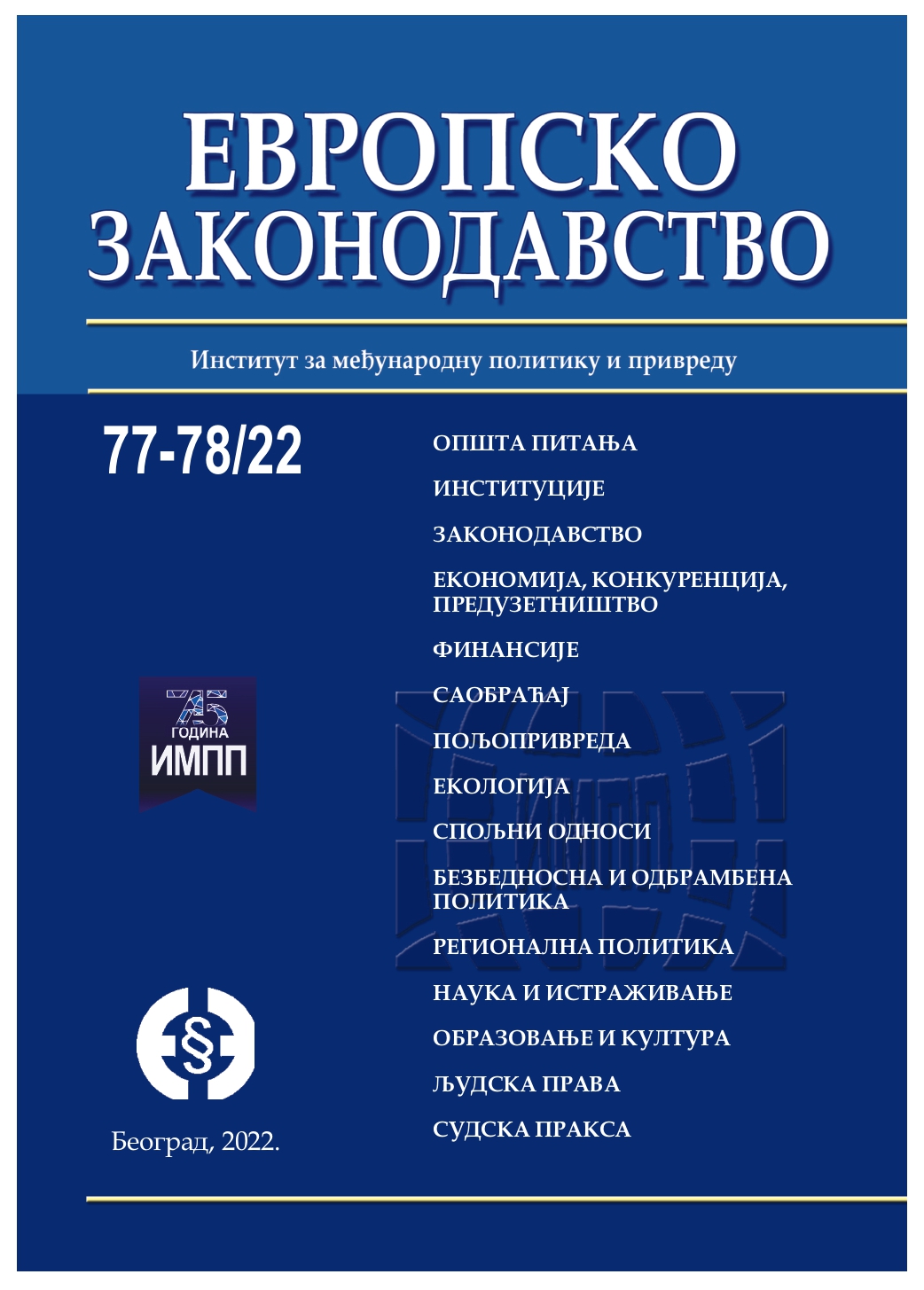Пољопривреда Републике Србије у светлу Стратегије за заштиту биодиверзитета 2030
Agriculture of the Republic of Serbia in the light of the EU biodiversity strategy for 2030
Author(s): Dušan DabovićSubject(s): EU-Legislation
Published by: Институт за међународну политику и привреду
Keywords: Agriculture;biodiversity;ecology;organic production;environmental protection
Summary/Abstract: The purpose of this article is to determine the impact of the EU Biodiversity Strategy for 2030 on agriculture in the Republic of Serbia, both in the normative sense and in the sense of the direction of further development of domestic agriculture. The methods used in this paper are the formal-legal method, the comparative method, the text analysis method, and the statistical methods. After introductory considerations, the section related to the EU Biodiversity Strategy for 2030 analyses issues that are most important for agriculture in the European Union and also indirectly for our agriculture: protection and restoration of nature in the EU; strengthening the EU legal framework for nature restoration; return of nature to agricultural land; support of agroforestry, etc. In the part that refers to the importance of the mentioned European legislation for our country, the Strategy of Agriculture and Rural Development of the Republic of Serbia for the period 2014–2024 is analysed as a basic strategic document in the field of agriculture. This document, among other things, regulates the issue of biodiversity protection as well as two appropriate medium-term programs. Also, in this part, the relevant provisions of three valid relevant laws and several bylaws are analysed. The conclusion states that domestic strategic acts in the field of agriculture, as well as the most important regulations, are already harmonized with the EU Biodiversity Strategy for 2030 for the most part, although the period of implementation of our highest strategic act in the field of agriculture is delayed by about five years. European strategic documents, as well as regulations, with which the relevant domestic acts were harmonized, progressively accepted the principles of environmental protection and reduced the importance of intensive agricultural production. In that sense, it means the legislator's obligation to harmonise all agricultural policy measures with the requirements of environmental protection and biodiversity, and then introducing environmental protection into agricultural goals, supporting organic production, conservation of genetic resources, sustainable use of agricultural land, etc. However, domestic legislation in the field of agriculture and rural development regarding the protection of biodiversity is not in line with the EU Biodiversity Strategy for 2030 in the part that generally refers to the reduction of agricultural production by reducing the total agricultural land area by 10 percent, which would return to nature, i.e., non-agricultural contents. At the same time, the areas under organic production would increase up to 25 percent of the total agricultural land. Also, according to this strategy, it is necessary to reduce the consumption of pesticides by 20 percent and the content of chemical substances in the soil by 50 percent. It can be expected that these goals of the EU Biodiversity Strategy for 2030will be implemented in our most important strategic document on agricultural and rural development in the upcoming period, that is, after the expiration of the current strategy from 2025. In other words, the relevant regulations will eventually be carried out by 2035.
Journal: Европско законодавство
- Issue Year: 2022
- Issue No: 77-78
- Page Range: 221-241
- Page Count: 21
- Language: Serbian

